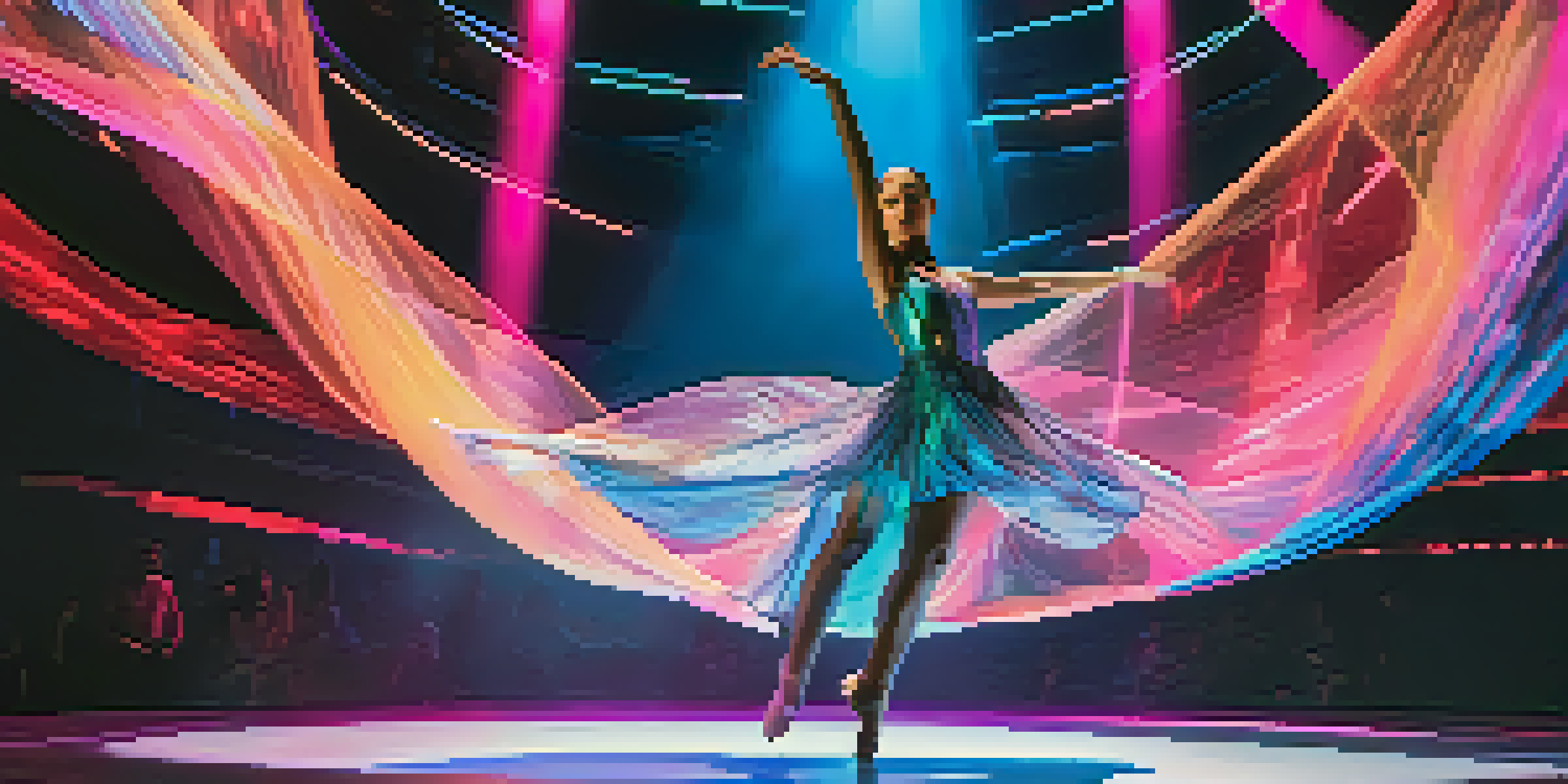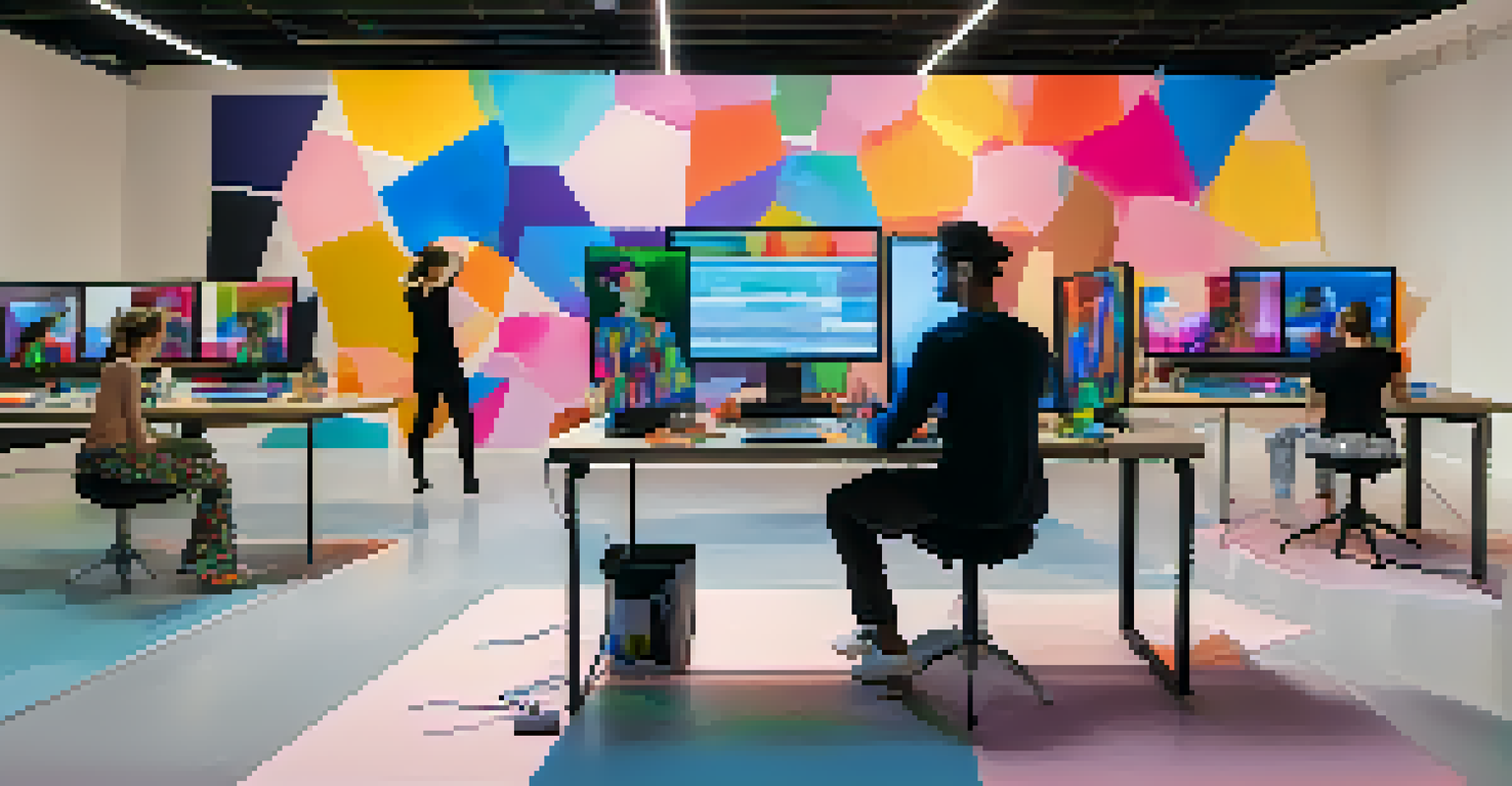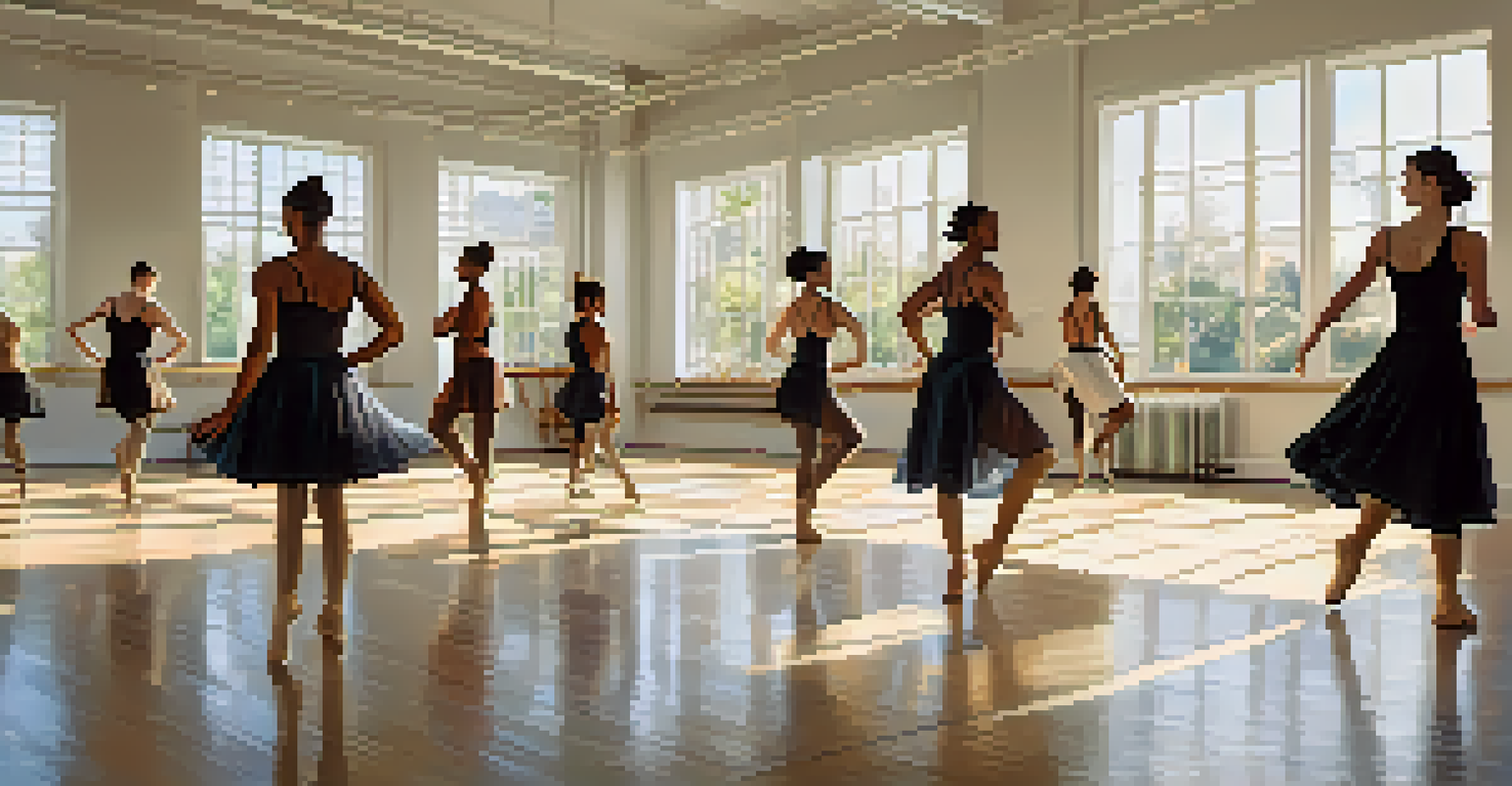The Intersection of Dance and AI: Creating Intelligent Choreography

Understanding Dance and AI: A New Creative Frontier
The fusion of dance and artificial intelligence (AI) is an exciting frontier that blends creativity with technology. Imagine choreographers collaborating with intelligent systems to enhance their artistic vision. This partnership not only inspires new forms of expression but also challenges traditional notions of creativity and authorship in the arts.
The future of dance is not just about movement but about how technology can enhance our expressions and narratives.
AI can analyze vast amounts of dance data, identifying patterns and movements that a human might overlook. This capability allows for the generation of new choreography that is both innovative and rooted in established techniques. By leveraging AI, dancers and choreographers can explore uncharted territories in movement, leading to groundbreaking performances.
As AI continues to evolve, it opens up a world of possibilities for collaboration between human creativity and machine learning. This intersection not only enriches the dance community but also invites audiences to rethink their understanding of performance art. Together, dance and AI are setting the stage for a transformative experience.
AI-Powered Tools: Enhancing Choreographic Processes
Several AI-powered tools are emerging to support choreographers in their creative processes. For example, software like Google’s Move Mirror uses machine learning to recognize and replicate human movements. This allows choreographers to visualize their ideas in real-time, making the creative process more dynamic and interactive.

These tools can assist in everything from initial idea generation to refining intricate sequences. By offering suggestions based on existing choreography, AI can spark inspiration and help choreographers push their creative boundaries. This collaboration between humans and machines fosters an environment of experimentation and discovery.
AI Enhances Choreography Creation
AI tools support choreographers by analyzing dance data, generating innovative choreography, and fostering an environment of experimentation.
Moreover, the accessibility of these AI tools means that dancers of all backgrounds can explore choreography in new ways. This democratization of dance creation encourages diverse voices and styles, enriching the art form as a whole. With AI as a partner, the creative possibilities are virtually limitless.
The Role of Data in Shaping Dance Choreography
Data plays a crucial role in how AI contributes to choreography. By analyzing data from past performances, AI systems can identify successful movement patterns and emotional responses from audiences. This analysis allows choreographers to make informed decisions about which elements to incorporate into their work.
Art is not a mirror held up to reality, but a hammer with which to shape it.
Additionally, data-driven insights can help tailor performances to specific audiences or venues, enhancing the overall experience. For instance, understanding how different demographics respond to various styles can guide choreographers in crafting pieces that resonate deeply with viewers. This data-centric approach makes choreography more relevant and impactful.
However, it's important to remember that while data can inform creativity, it shouldn't stifle it. The most memorable performances often arise from intuition and emotion, elements that are uniquely human. Balancing data-driven insights with personal expression is key to creating choreography that truly connects with audiences.
Collaborative Projects: Dance Meets Artificial Intelligence
Collaborative projects between dancers and AI developers are paving the way for innovative performances. One notable example is the work done by choreographer Wayne McGregor, who has integrated AI into his dance pieces. By collaborating with technologists, he has created works that challenge both dancers and audiences to engage with the concept of movement in new ways.
These collaborations often lead to performances that are not only visually stunning but also intellectually stimulating. When dancers interact with AI algorithms in real-time, it creates a unique dialogue between human and machine that captivates audiences. This interplay of creativity highlights the potential of AI as a valuable partner in the artistic process.
Collaboration Redefines Dance Artistry
Collaborative projects between dancers and AI developers lead to innovative performances that challenge traditional notions of movement and creativity.
As these projects gain traction, they also encourage more artists to explore the intersection of dance and technology. The result is a vibrant community of creators who are unafraid to experiment and redefine what dance can be in the digital age. This spirit of collaboration is essential for the continued evolution of both art forms.
Ethical Considerations: AI in the Dance World
With the rise of AI in dance, ethical considerations come to the forefront. Questions arise around authorship, ownership, and the role of human creativity in an increasingly automated world. Who owns the choreography created by an AI? Is it the choreographer, the programmer, or the AI itself? These questions challenge the traditional understanding of artistic creation.
Additionally, the potential for AI to replicate styles and movements raises concerns about cultural appropriation and authenticity. As AI tools become more sophisticated, they might inadvertently mimic specific cultural dance forms without proper context or respect. This necessitates a conversation within the dance community about how to use AI responsibly and ethically.
Engaging these ethical discussions is crucial as we navigate this new landscape. By fostering an environment of transparency and respect, the dance community can ensure that the integration of AI enhances rather than diminishes the art form. Ultimately, the goal is to use technology to enrich human expression, not replace it.
Audience Engagement: AI-Enhanced Dance Experiences
AI is also transforming how audiences engage with dance performances. Interactive installations and multimedia experiences are becoming more common, allowing viewers to immerse themselves in the performance. For instance, some shows now incorporate real-time data that changes the visuals or sound based on audience reactions, creating a unique experience for each performance.
These innovations not only enhance the viewing experience but also invite the audience to become active participants in the art. By using AI to gauge audience engagement, choreographers can tailor their performances to resonate on a deeper level. This shift from passive observer to active participant fosters a stronger connection between the audience and the art.
Ethics in AI-Driven Dance
The integration of AI in dance raises ethical questions about authorship, cultural appropriation, and the balance between human creativity and automation.
As AI continues to develop, we can expect even more creative ways to engage audiences. The potential for personalized experiences based on individual preferences or reactions opens new avenues for exploration in dance. Embracing these technologies can lead to a richer, more inclusive dialogue between artists and their audiences.
The Future of Dance: Embracing AI and Creativity
Looking ahead, the future of dance is undoubtedly intertwined with AI technology. As artists continue to embrace these advancements, we can anticipate a wave of innovative performances that challenge our perceptions of movement and creativity. The blend of human artistry and machine intelligence promises to unlock new dimensions in storytelling and expression.
Moreover, the potential for AI to democratize dance creation means that even more voices can contribute to the narrative of this art form. By breaking down barriers and providing accessible tools, AI allows for a diverse range of styles and interpretations to flourish. This inclusivity enriches the dance community and ensures its evolution.

Ultimately, the intersection of dance and AI is not just about technology; it's about expanding the boundaries of human creativity. As we navigate this exciting new landscape, we have the opportunity to redefine what it means to create and experience dance in the modern world. Together, we can embrace a future where art and technology coexist harmoniously.